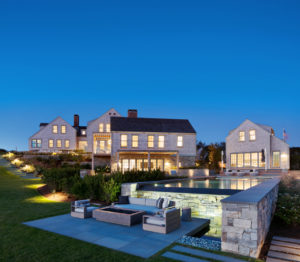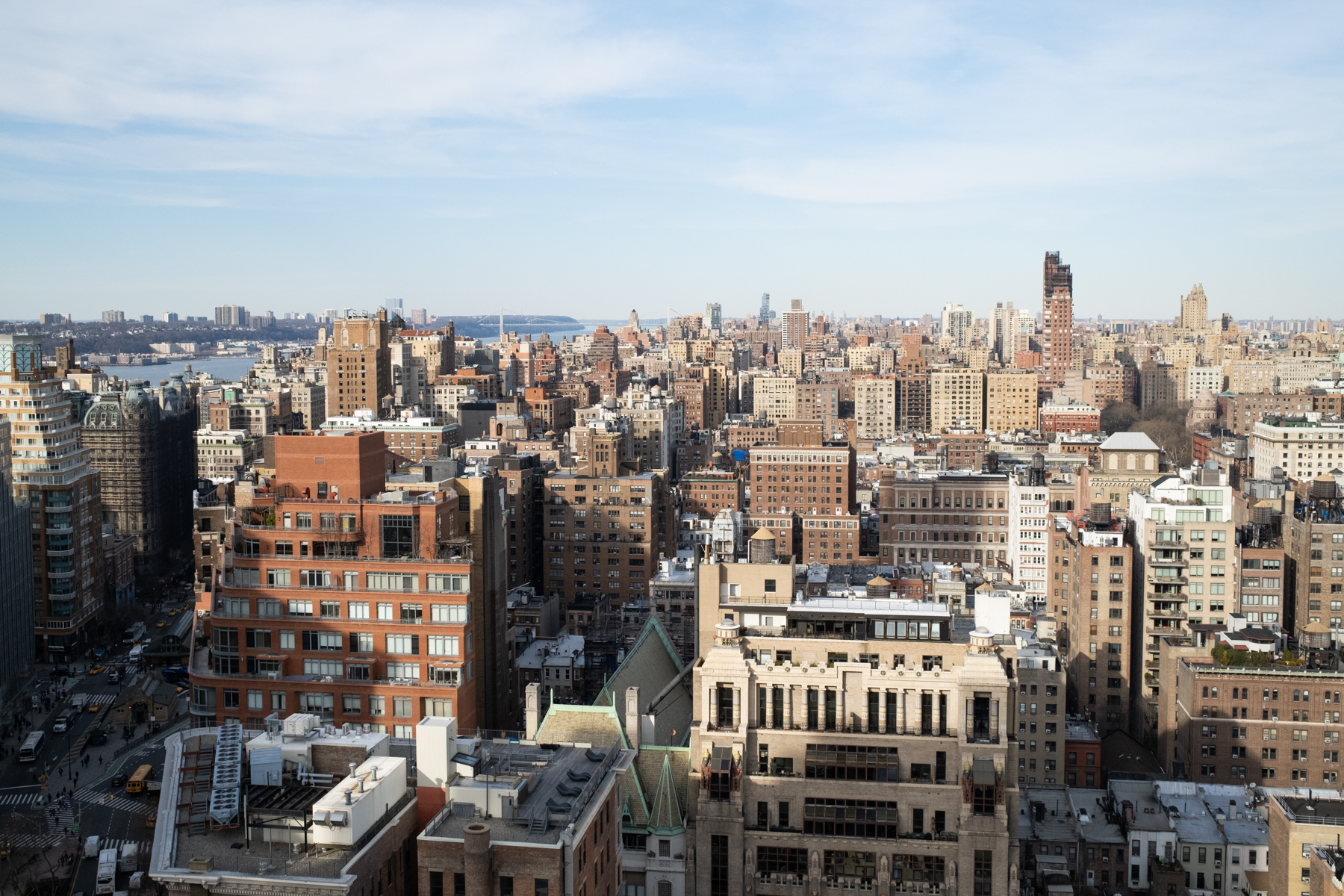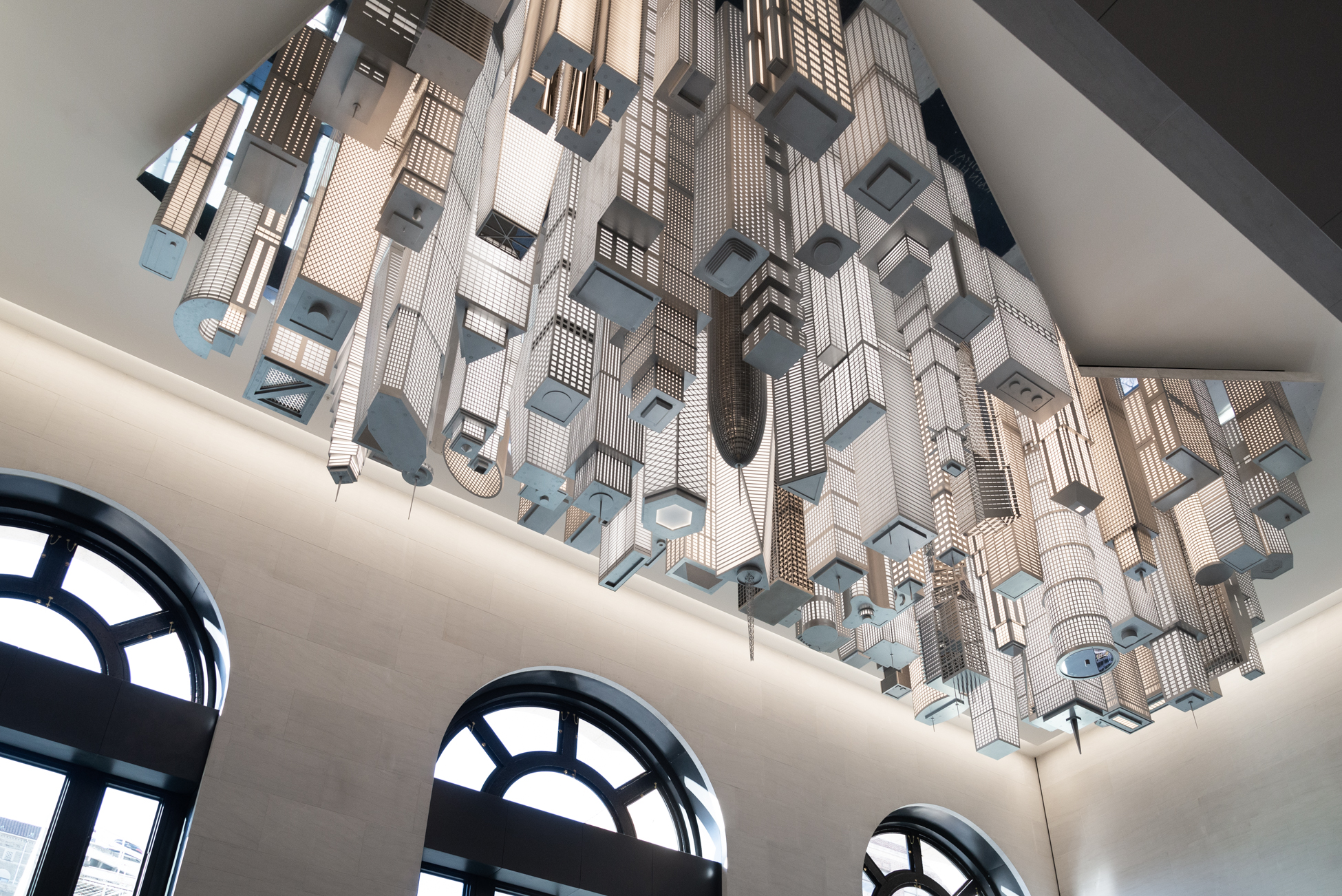10N Residence, Nantucket
As important as collaboration with architects and artists is to our studio, so too is synthesis of technological tools to arrive at unique solutions. At CRAFT, we combine our collective expertise in software, modeling, and analysis to bring unique structural insight into complex design and build processes.
The design of the 10N residence in Nantucket allowed several exciting opportunities for intersection between structural engineering concepts and realization of an architect’s vision.
To complement the grand exterior of this sprawling waterfront home, a two-story feature wall made of board-formed concrete was imagined for the interior of the home. This concrete wall was to be used as a multi-level central staircase while serving as a visually stunning focal piece.

While framing walls and roofs are typically the first elements to define a structure, here presented a unique situation: erection and completion of the concrete wall prior to any of the surrounding building frame. Further, the two-story staircase incorporated into this wall would be flanked on the other side by a glass guardrail. Therefore, CRAFT designed not just for a poured concrete wall as a first building element, but a finished wall with embedded stair tread attachment points. Extremely detailed analysis and precise calibration was necessary for every design aspect, including all features, finishes and connections.
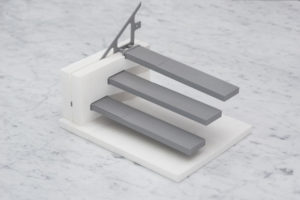
Because of the connection to a non load-bearing glass guardrail, the stair treads cantilevering four feet out from the concrete wall had an extremely limited allowable vertical deflection. To ensure structural integrity of stair treads, our team brainstormed and tested via rapid prototyping various methods of attachment that would be constrained within the height of the stair tread and be hidden from view.

Our models suggested that within this limited stair tread height, maximum stiffness would be achieved via the use of post-tensioned bolts inside the treads connected to high-strength tapped steel blocks embedded in the concrete wall. Maximizing the surface area of engagement in constant compression allowed maximum resistance to deflection. Using finite element analysis, we modeled each component within the stair tread and attachment points to confirm behavior under loading and ensure accuracy of our deflection measurements.
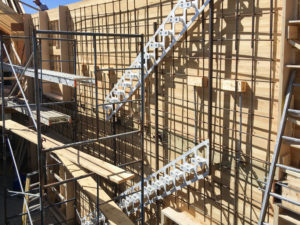
Embedding the high-strength tapped steel blocks at specific locations in the wall required exact placement via a laser cut steel template in the form of an open stringer. Each of two stringers were set on temporary support posts within the wall reinforcement, one for each flight. The open form of the stringer template enabled free flow of concrete during casting.
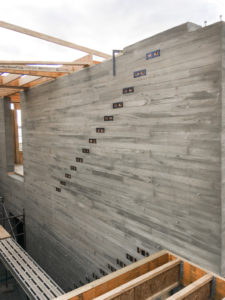
The finished concrete wall was to have yet another key feature: a board-formed finish resembling wood grain. Creating this wood grain pattern was accomplished by lining the interiors of the formwork with horizontal planking roughened to maximize wood grain expression. Because this could not be disturbed once complete, all elements of the stair tread connections needed to be prepped well in advance of the casting, including attachment points integrated into the striations of the wood patterning on the interior of the formwork. This again required an iterative process of design and analysis, creativity in assembly, and modeling expertise to confirm integrity of performance under normal loads. To confirm feasibility, rapid prototyping via 3D modeling allowed in-house assembly in the same sequence that would be required onsite. After concrete pour, the final step was removal of rubber pads used as placeholders, revealing recesses in the wall for access to the high-strength tapped steel blocks beneath.
The intricacies of the planning and design process of this feature staircase was made possible through combining complex analysis and visualization tools to support development. To find out more about CRAFT’s technological capabilities in imagining unique design solutions, please browse our Projects page or contact us directly to discuss possibilities.
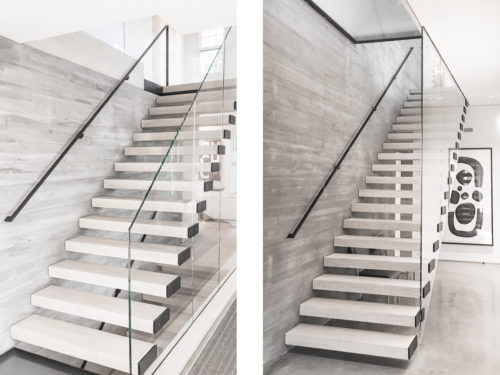
Upper and lower level views of the completed staircase
Architect: Workshop/APD
Steel Fabricator: Concentric Fabrication
Contractor: J. Brown Builders
Sign up for more from CRAFT

